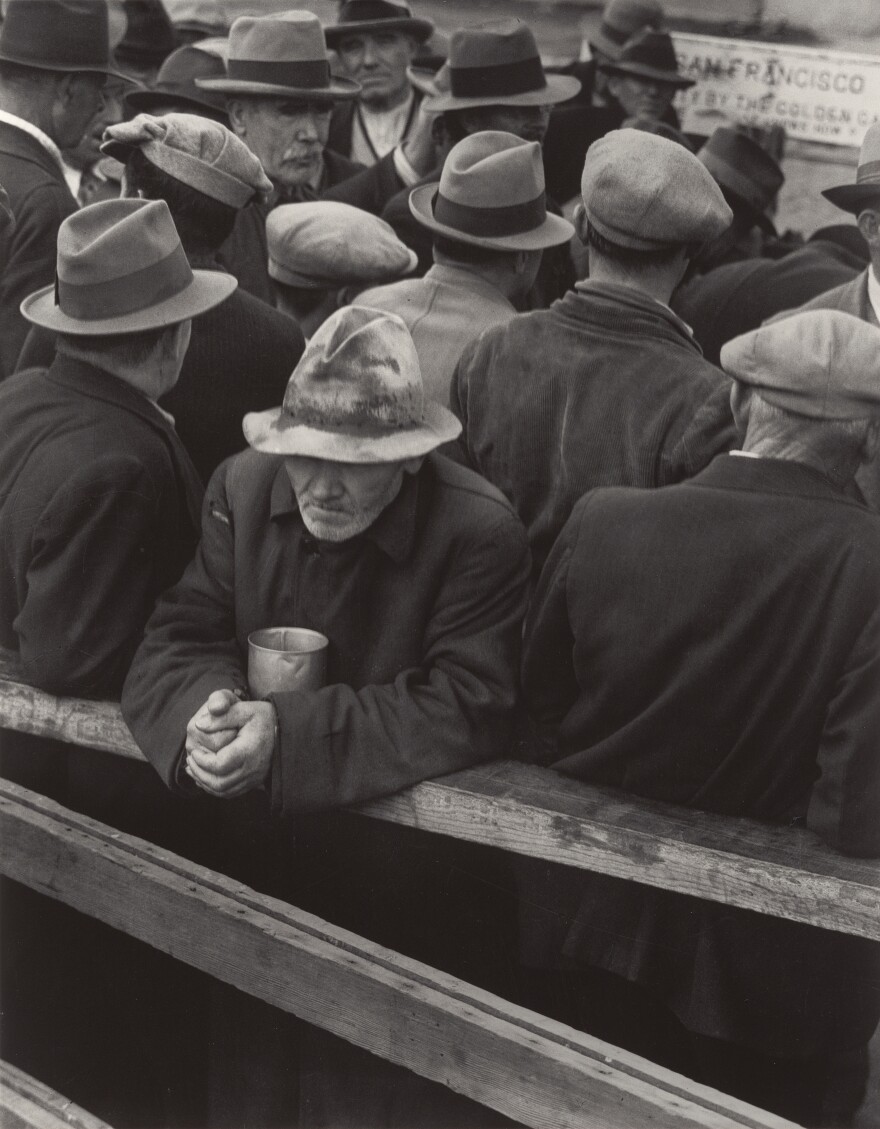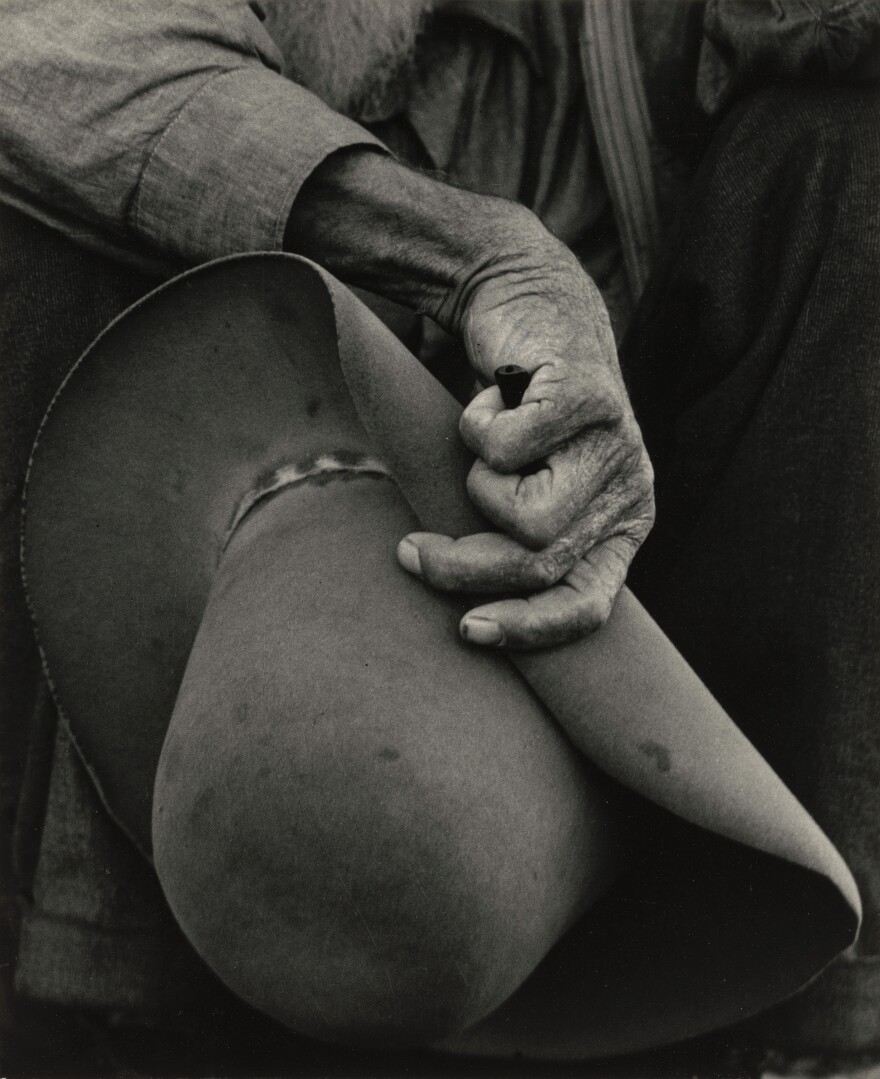Migration is global these days. In this country, it echoes the desolation of the 1930s Depression, and the Dust Bowl, when thousands of Americans left home to look for work somewhere ... anywhere.
In Dorothea Lange: Seeing People an exhibition at the National Gallery in Washington, D.C., the photographer shows the desolation of those days. Migrant Mother, her best-known picture, from 1936, is a stark reminder of the times
Curator Philip Brookman sees worry in the migrant mother's face. Three children, the older ones clinging to her. She's Florence Owens Thompson. Thirty two years old, beautiful once. Now staring into an uncertain future, wondering about survival.
But Brookman also sees "a tremendous amount of resilience and strength in her face as well."
It's an American face, but you could see it today in Yemen, Darfur, Gaza.
Lange was worlds away 16 years earlier in San Francisco. She started out as a portrait photographer. Her studio was "the go-to place for high society" Brookman says.

For this portrait of Mrs. Gertrude Fleishhacker, Lange used soft focus and gentle lighting. Researcher Elizabeth Fortune notices "she's wearing a beautiful long strand of pearls." And sits angled on the side. An unusual pose for 1920. Lange and some of her photographer friends were experimenting with new ways to use their cameras. Less formal poses, eyes away from the lens.
But soon, Lange left her studio and went to the streets. It was the Depression. "She wanted to show in her pictures the kind of despair that was developing on the streets of San Francisco," Fortune says. White Angel Breadline is "a picture she made after looking outside her studio window."

Fortune points out Lange's sensitivity to her subject: "He's anonymous. She's not taking anything from him. He's keeping his dignity, his anonymity. And yet he still speaks to the plight of a nation in crisis.
A strong social conscience keeps Lange on the streets. She becomes a documentary photographer — says it lets her see more.
"It was a way for her to understand the world," Fortune says.
The cover of the hefty exhibition catalogue shows a tightly cropped 1938 photo of a weathered hand, holding a weathered cowboy hat. "A hat is more than a covering against sun and wind," Lange once said. "It is a badge of service."
The photographs of Dorothea Lange serve our understanding of a terrible time in American history. Yet in its humanity, its artistry, it speaks to today.
Copyright 2025 NPR




